Topics
Maximizing Shift-Right Testing with AI in Production
What Is Shift-Right Testing?
Most Common Types of Shift-Right Testing
Key Limitations of Traditional Shift-Right Testing
How Shift-Right Testing Can Be Enhanced with AI in Production
In Conclusion
Share with your community!
Maximizing Shift-Right Testing with AI in Production
You push a release. Then it breaks in production. Again.
You thought testing was done before release. But the real test happens after—when real users hit your app, on real devices, under real chaos. That’s shift-right testing: learning how your software actually behaves, not how you hoped it would.
And now, AI is taking it to the next level, turning that learning into action—fast, precise, and relentless. In this article, we’ll break down why shift-right testing matters and how AI in production makes it a game changer.
What Is Shift-Right Testing?
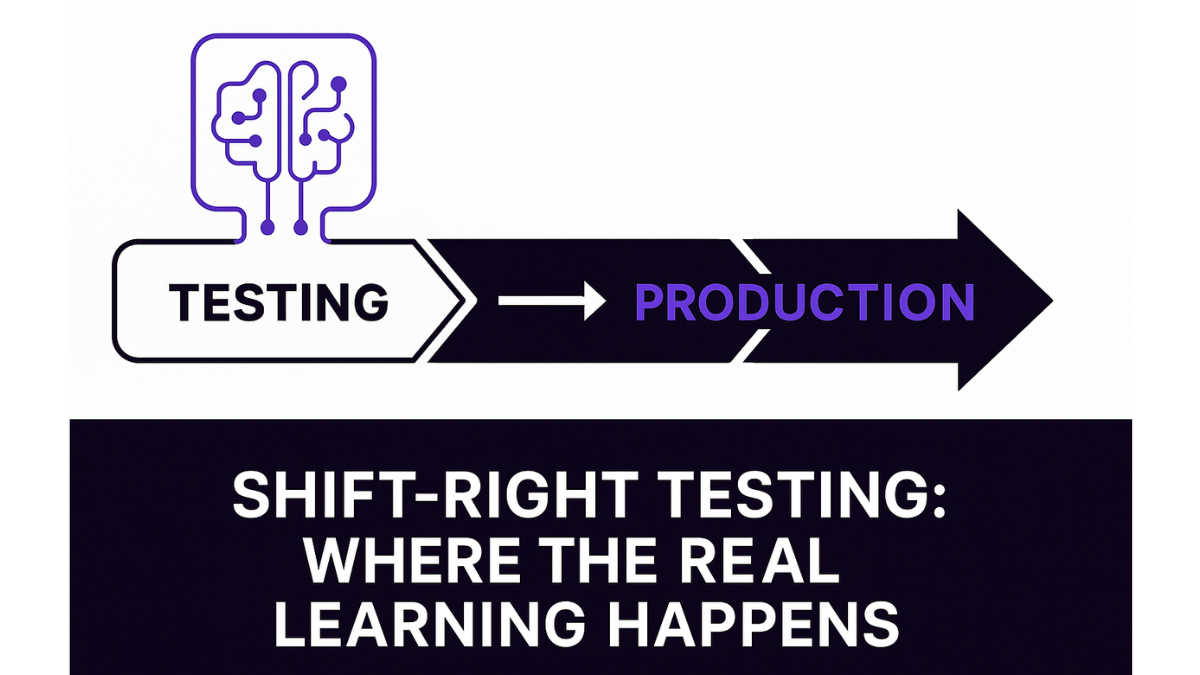
Most teams still treat production like a museum.
Fragile. Off-limits. “Don’t touch anything or the whole thing breaks.”
That mindset is dead.
The real world doesn’t run on clean test data and perfect network conditions.
It runs on dropped connections, angry users, third-party APIs going down at 3 a.m., and edge cases no QA engineer could’ve imagined.
You can simulate only so much. At some point, you have to jump in. Shift-right is that jump.
It’s part of a broader DevOps evolution. Teams ship faster now, sometimes dozens of times a day. With that speed, traditional QA gates become bottlenecks. You can’t test everything upfront. So you shift some testing right into production, where the truth lives.
This isn’t new. Google, Netflix, and Amazon have done it for years. But it’s no longer just for tech giants. Tools have caught up. Monitoring is sharper. Rollbacks are faster. And AI in production is making it smarter.
Shift-right testing is about embracing uncertainty. You deploy small, watch closely, learn fast, and adapt. And when done right, it reduces risk instead of increasing it.
Because the biggest risk is shipping something no one would use—or worse, something that breaks silently, undetected, until it’s too late.
With shift-right testing, you learn what users actually do, not what you assumed. You catch edge cases that no QA team could’ve predicted. And with AI in production, you can anticipate them.
Most Common Types of Shift-Right Testing
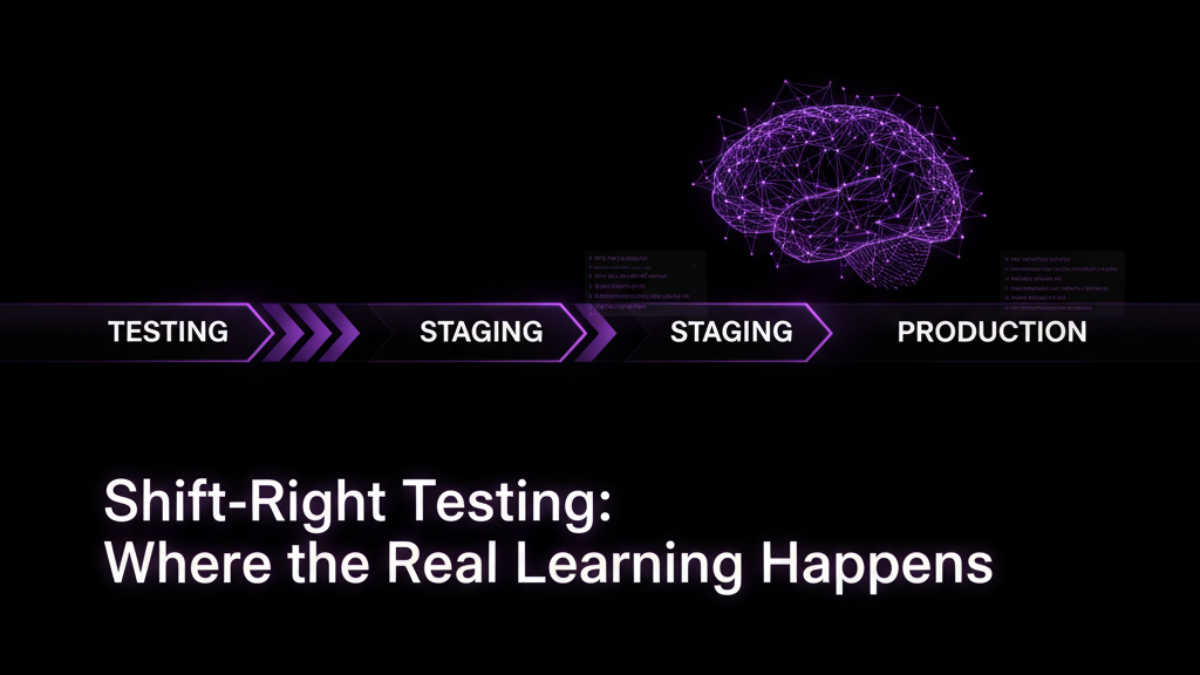
When people hear “shift-right,” they think it’s one thing. It’s not. It’s a toolbox. And every tool has a different purpose. Here are the big ones:
■ A/B Testing
The classic experiment. Two versions, two user groups. Which one works better? Simple but powerful when you want data, not opinions.
■ Canary Releases
Roll out to 1% of users first. Watch. If things burn, only a few notice. If it holds, scale to 5%, then 25%. It’s the software version of “dip your toe in.”
■ Dark Launching
Code goes live—but no one knows. Hidden behind flags. Running in production, under real load, but not visible. You test performance, integration, and failure modes—before anyone clicks.
■ Feature Toggles
Like remote controls for functionality. Turn features on/off without redeploying. Let you test in production, isolate issues, or kill a broken release in seconds.
■ Fault Injection Testing
What happens when things break? You simulate failures on purpose. Slow down a service. Kill a process. See how the system reacts. Better to learn now than during a real outage.
■ Chaos Engineering
Next level of fault injection. Instead of small failures, you unleash chaos—literally. Random outages, network drops, server crashes. Sounds scary, but it makes your system bulletproof.
■ Blue-Green Deployments
Two environments. One live (blue), one idle (green). You deploy to green, test it live (with real traffic), then switch. If it fails? You can flip back.
■ Shadowing (or Mirroring)
Real traffic, fake environment. You copy production requests into a shadow system to test changes without risking users.
Key Limitations of Traditional Shift-Right Testing
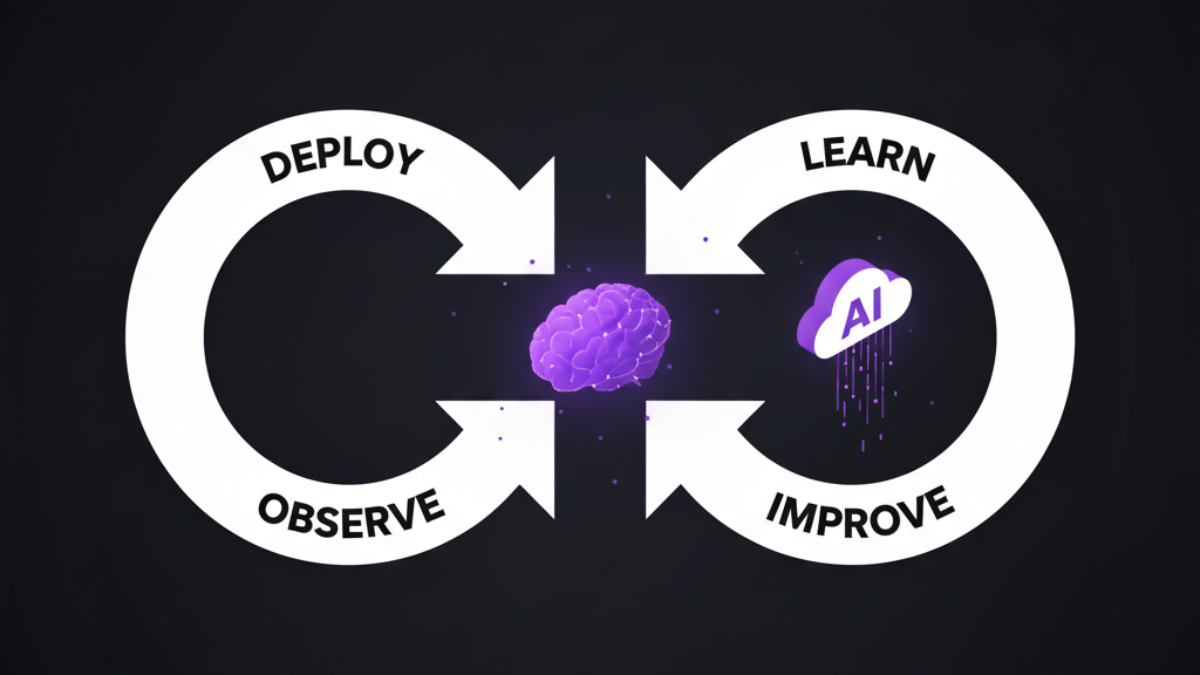
You can deploy in stages.
Use canaries. Toggles. Blue-green.
But if you’re still relying on humans to watch, react, and debug—you’re too slow.
Shift-right testing fails because the response system is broken.
You get alerts. Dozens. Hundreds. But which one matters? Which one is the first sign of collapse? Most teams just get drowned in noise.
They have monitoring. Logs. Traces. But they have no meaning. So they react late. Or worse—react to the wrong thing.
And when you’re dealing with live traffic, being late = failure.
You can shadow traffic, but if you don’t analyze it in real time, it’s just data sitting there.
You can run chaos experiments, but if you don’t learn from them automatically, you’ll keep breaking the same way.
Feedback loops are too long in traditional shift-right testing. You find out something’s broken—hours later. By then, users have left. Revenue is lost. Trust is gone.
Also: most tools don’t talk to each other.
Logs go here. Metrics there. CI/CD pipeline somewhere else.
You’re firefighting with puzzle pieces while the house burns.
Every outage should make the system smarter. Instead of post-mortems, writing a doc no one reads, and waiting for the next one.
You need a system that learns from production—not just survives it.
How Shift-Right Testing Can Be Enhanced with AI in Production
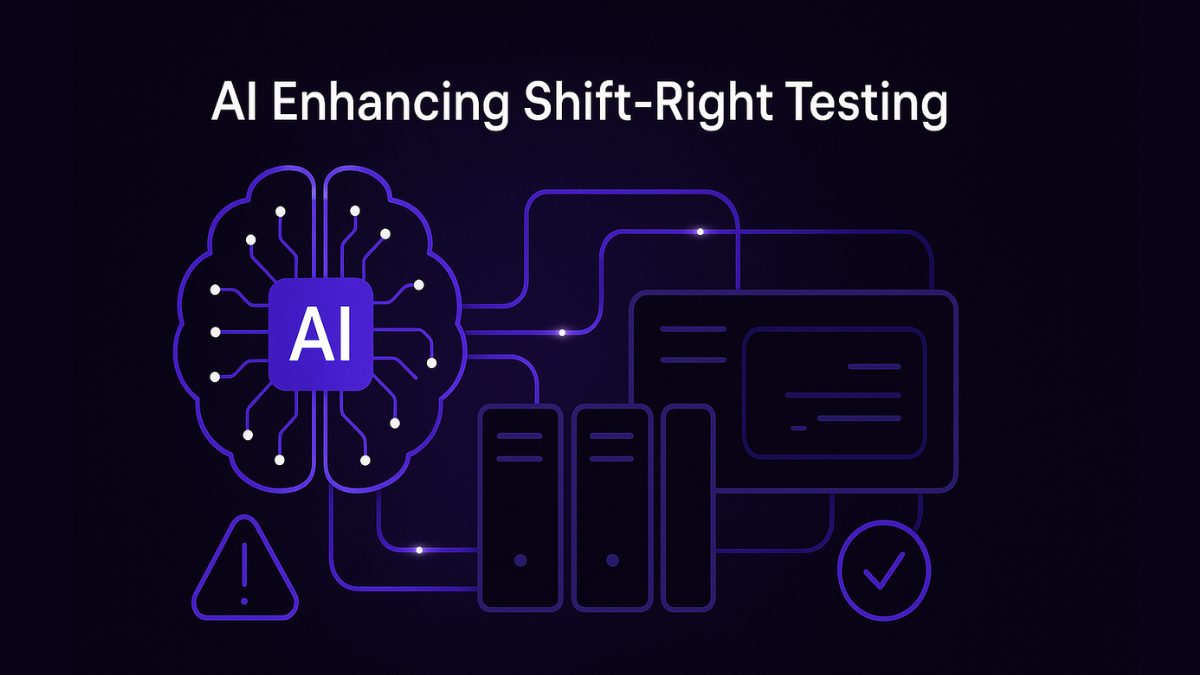
Traditional shift-right testing fights fires. AI in production prevents them. That’s the real difference. AI-powered test automation has already replaced 50% or more of manual testing in 46% of cases. So if you’re still writing, it's time to bring Artificial Intelligence into production testing. Here’s how AI can enhance it:
1. Anomaly Detection That Learns, Not Alarms
Traditional monitoring relies on static thresholds: “Alert if CPU > 80%.”
But real systems don’t work like that.
AI observes your environment over time and learns what “normal” looks like—per service, per user load, per time of day.
Then it spots deviations before they become outages:
It's more than a notification. It’s anticipation. And it stops failures before users notice.
2. Root Cause in Seconds, Not Hours
When something breaks, you don’t need more data. You need answers.
AI connects dots: logs, traces, metrics, and last deployment.
Then it says: “Service X failed because Service Y timed out—introduced in build #284, 22 minutes ago.”
3. Real User Behaviour Generates Real Test Cases
Your QA team can’t predict every user path. But AI can observe them.
Every click, every flow, every edge case in production becomes data.
AI sees it, turns it into a new test automatically.
This closes the gap between expected behaviour and actual usage.
4. Self-Healing Actions, Not Just Alerts
Most tools provide just alerts when things break. But AI-powered shift right testing in production can:
-
Roll back a faulty deployment automatically
-
Scale up a failing service
-
Redirect traffic from a failing node
No humans needed.
5. Predict Load Before It Breaks the App
AI-based testing tools can predict load. Seasonal spikes, usage patterns, sudden growth—it sees the curve before it hits.
Then it triggers automated performance testing.
No more “we didn’t expect that many users.”
6. Smart Test Reporting That Tells the Truth
Forget dashboards full of charts no one understands.
AI summarizes what happened in plain English:
“Three high-risk failures in login flow. Root cause: session timeout bug. Recommended fix: extend TTL.”
Clear and fast test reporting. Zero meeting time.
7. Tests from Natural Language
You don’t need to code to create tests anymore.
Type: “Check if the user can reset password after 3 failed attempts.”
AI turns it into a full, executable test—validating UI, API, and backend flow.
Platforms like ZeuZ use AI to bridge the gap between intent and automation.
8. Continuous Learning, Not One-Time Checks
Every deployment. Every failure. Every user interaction.
AI remembers.
Your test suite evolves with your app. Not lagging behind.
That’s the real power of AI in production: It turns shift-right testing from “safety net” into an engine for continuous improvement.
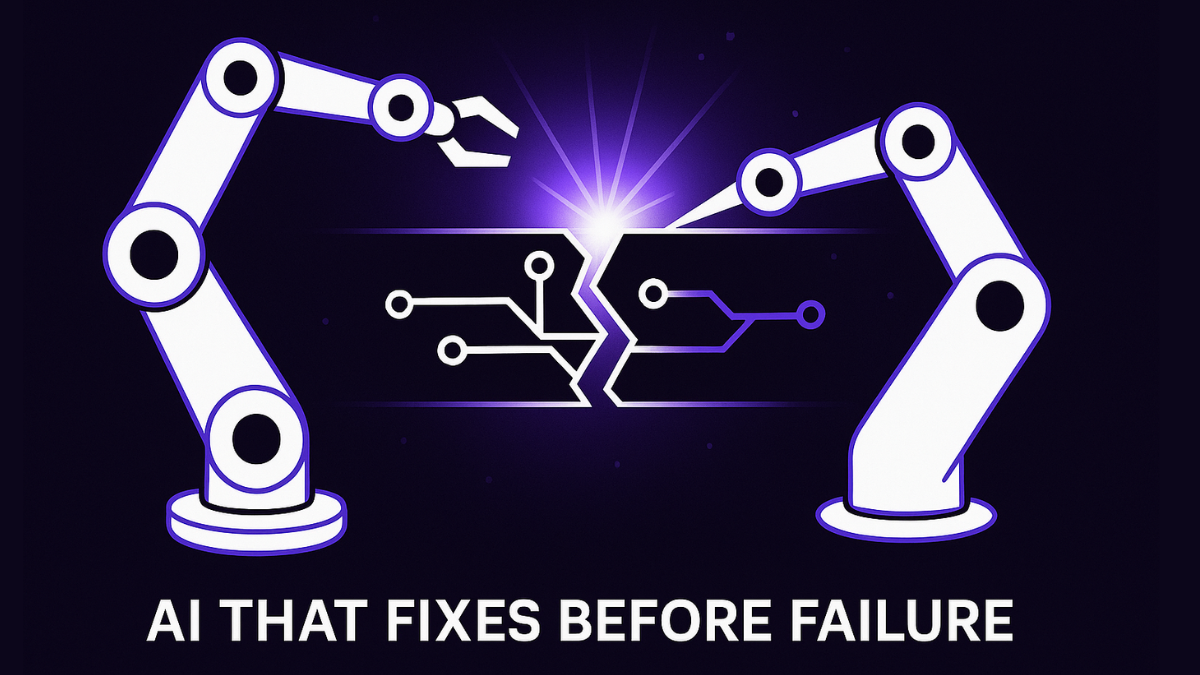
In Conclusion
Shift-right testing works—but only if it keeps up with production speed. Humans can’t do that alone. AI can. It learns, predicts, heals. Turns chaos into clarity.
Ready to take shift-right testing beyond dashboards? Start with a platform built for this future—ZeuZ.
Run smarter tests. Ship faster. Sleep better.





